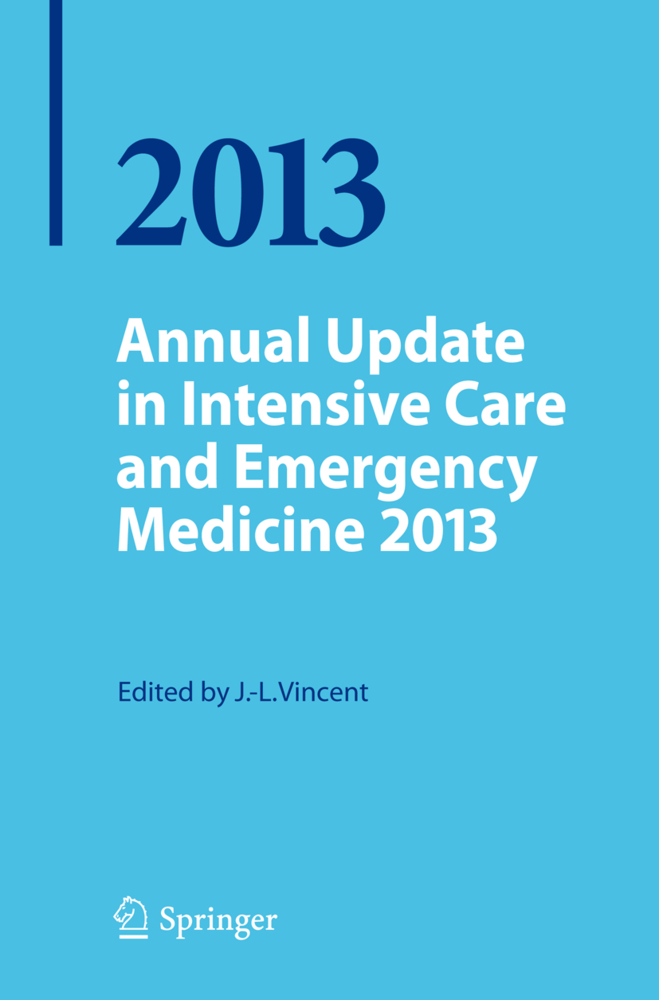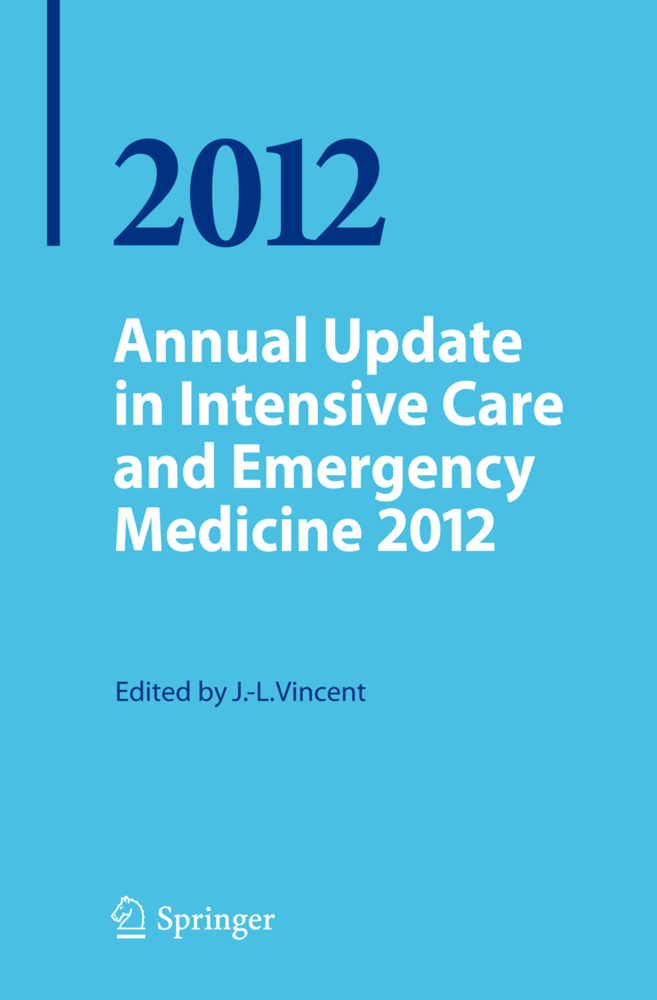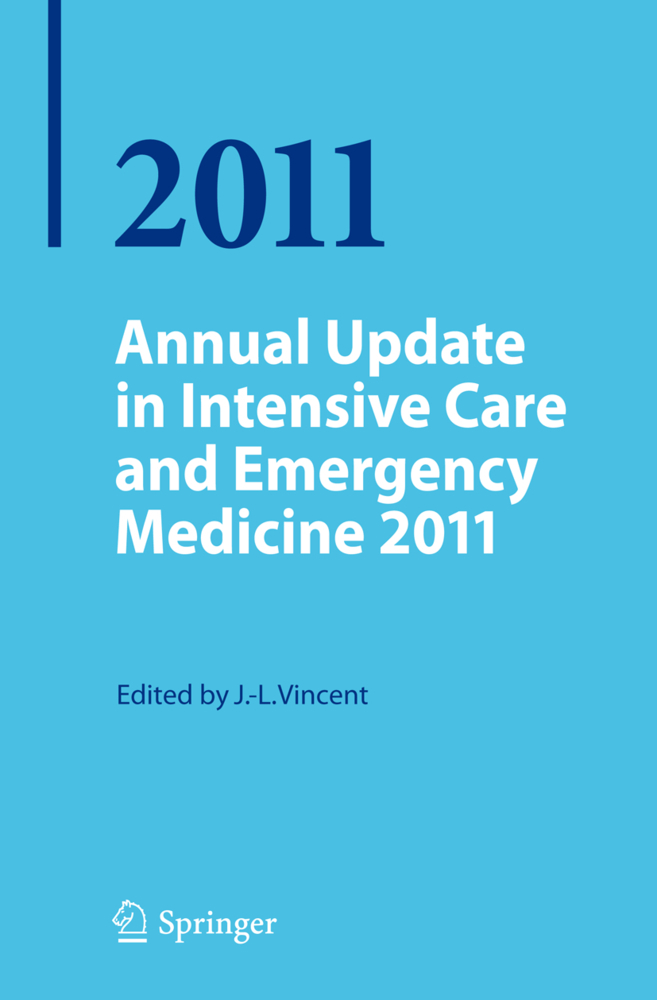Yearbook of Intensive Care and Emergency Medicine 2009
The Yearbook compiles the most recent developments in experimental and clinical research and practice in one comprehensive reference book. The chapters are written by well recognized experts in the field of intensive care and emergency medicine. It is addressed to everyone involved in internal medicine, anesthesia, surgery, pediatrics, intensive care and emergency medicine.
1;Table of Contents;52;List of Contributors;113;Common Abbreviations;284;I Genomics and Proteomics;294.1;Rethinking Sepsis: New Insights from Gene Expression Profiling Studies;304.1.1;Introduction;304.1.2;How to Identify and Measure Heterogeneity;304.1.3;Sources of Heterogeneity in Sepsis Patients;314.1.4;New Insights from Gene-expression Studies;324.1.5;Genomic Heterogeneity;344.1.6;Further Questions on an Existing Sepsis Model;364.1.7;Functional Mapping of Sepsis Genome to Monitor Immune Function;374.1.8;Conclusion;394.1.9;References;394.2;Mitochondrial Genetics and Sepsis;414.2.1;Introduction;414.2.2;Oxidative Phosphorylation and ATP Generation;414.2.3;Reactive Oxygen Species;424.2.4;Apoptosis;424.2.5;Mitochondria and Sepsis;434.2.6;Mitochondrial Genetics;434.2.7;Mitochondrial Haplogroups;444.2.8;Conclusion;474.2.9;References;474.3;Lung Proteomics in Intensive Care;504.3.1;Introduction;504.3.2;The Search for Biomarkers;504.3.3;Lung Proteomics;524.3.4;Applications in ALI/ARDS;584.3.5;Future Directions;594.3.6;References;625;II Inflammatory Response;645.1;The Host Response to Sepsis;655.1.1;Introduction;655.1.2;Epidemiology and Genetic Variability;665.1.3;Pathogen Recognition Systems;675.1.4;Coagulation and Anticoagulation;705.1.5;Immune Suppression and Apoptosis;725.1.6;HMGB1 and RAGE;725.1.7;The Cholinergic Anti-inflammatory Pathway;735.1.8;Macrophage Migration Inhibitory Factor;745.1.9;C5a and C5a Receptor;745.1.10;Conclusion;745.1.11;References;745.2;Endotoxin Tolerance: Mechanisms and Clinical Applicability;775.2.1;Introduction;775.2.2;Mechanisms of Endotoxin Tolerance;775.2.3;Endothelial Function and Microcirculation during LPS Tolerance;795.2.4;Clinical Applicability and Therapeutic Possibilities;815.2.5;Conclusions;825.2.6;References;825.3;Oxidative Stress and Endothelial Dysfunction during Sepsis;855.3.1;Introduction;855.3.2;Sources and Actions of ROS and RNS in the Endothelium during Sepsis;855.3.3;Mechanisms of Endothelial Dysfunction during Sepsis;875.3.4;Conclusion;895.3.5;References;905.4;Measurement of Carbon Monoxide: From Bench to Bedside;915.4.1;Introduction;915.4.2;Carbon Monoxide Measurement;915.4.3;Carbon Monoxide Concentrations in Critically Ill Patients;925.4.4;Carbon Monoxide Concentrations and Lung Diseases;965.4.5;Carbon Monoxide Concentrations and Other Diseases;1035.4.6;Conclusion;1035.4.7;References;1035.5;Monitoring Immune Dysfunction in Septic Patients: Toward Tailored Immunotherapy;1075.5.1;Introduction;1075.5.2;Monocyte Dysfunction;1085.5.3;T Lymphocyte Dysfunction;1115.5.4;Conclusion;1145.5.5;References;1156;III Current and Future Management of Sepsis;1176.1;Source Control in the ICU;1186.1.1;Introduction;1186.1.2;What is 'Source Control'?;1186.1.3;Elements of Source Control;1196.1.4;Do we need to perform Source Control?;1206.1.5;When to Perform Source Control?;1216.1.6;The Role of the Intensivist;1216.1.7;What if Source Control is Impossible or Fails?;1236.1.8;Special Considerations in Critically Ill Patients;1236.1.9;Conclusion;1256.1.10;References;1256.2;IgM-enriched Immunoglobulins in Sepsis;1276.2.1;Introduction;1276.2.2;Mechanisms of Action of IVIG in Sepsis;1286.2.3;Differences between IgG- and IgM-enriched Immunoglobulins;1296.2.4;Clinical Significance of IgM-enriched IVIG;1306.2.5;Conclusion;1336.2.6;References;1346.3;Clarithromycin: A Promising Immunomodulator in Sepsis;1366.3.1;Introduction;1366.3.2;Indirect Evidence for an Immunomodulatory effect of Macrolides in Pneumonia;1376.3.3;Lessons from Animal Studies;1386.3.4;Conclusion;1416.3.5;References;1426.4;High-flow Hemofiltration as an Adjunctive Therapy in Sepsis;1446.4.1;Introduction;1446.4.2;Mechanism of Action: Hemofiltration as a New Shield against the 'Chaos Theory' and 'Complex Non-linear Systems' in Sepsis;1446.4.3;Recent Animal Trials and Clinical studies Highlighting the Crucial Roles of Dosing and Timing ;1466.4.4;Practic
Vincent, Jean-Louis
| ISBN | 9783540922766 |
|---|---|
| Artikelnummer | 9783540922766 |
| Medientyp | E-Book - PDF |
| Auflage | 2. Aufl. |
| Copyrightjahr | 2009 |
| Verlag | Springer-Verlag |
| Umfang | 998 Seiten |
| Kopierschutz | Digitales Wasserzeichen |



